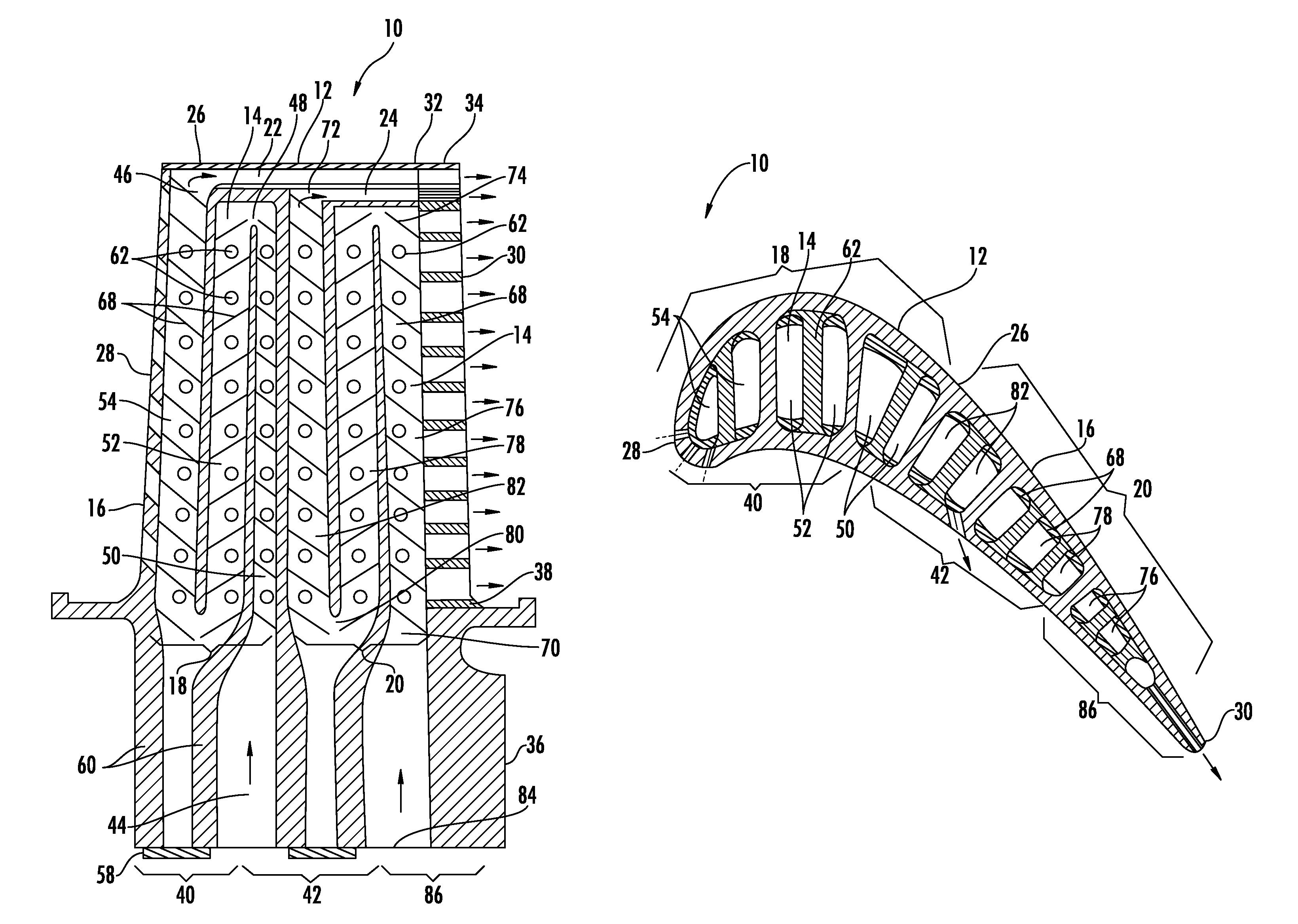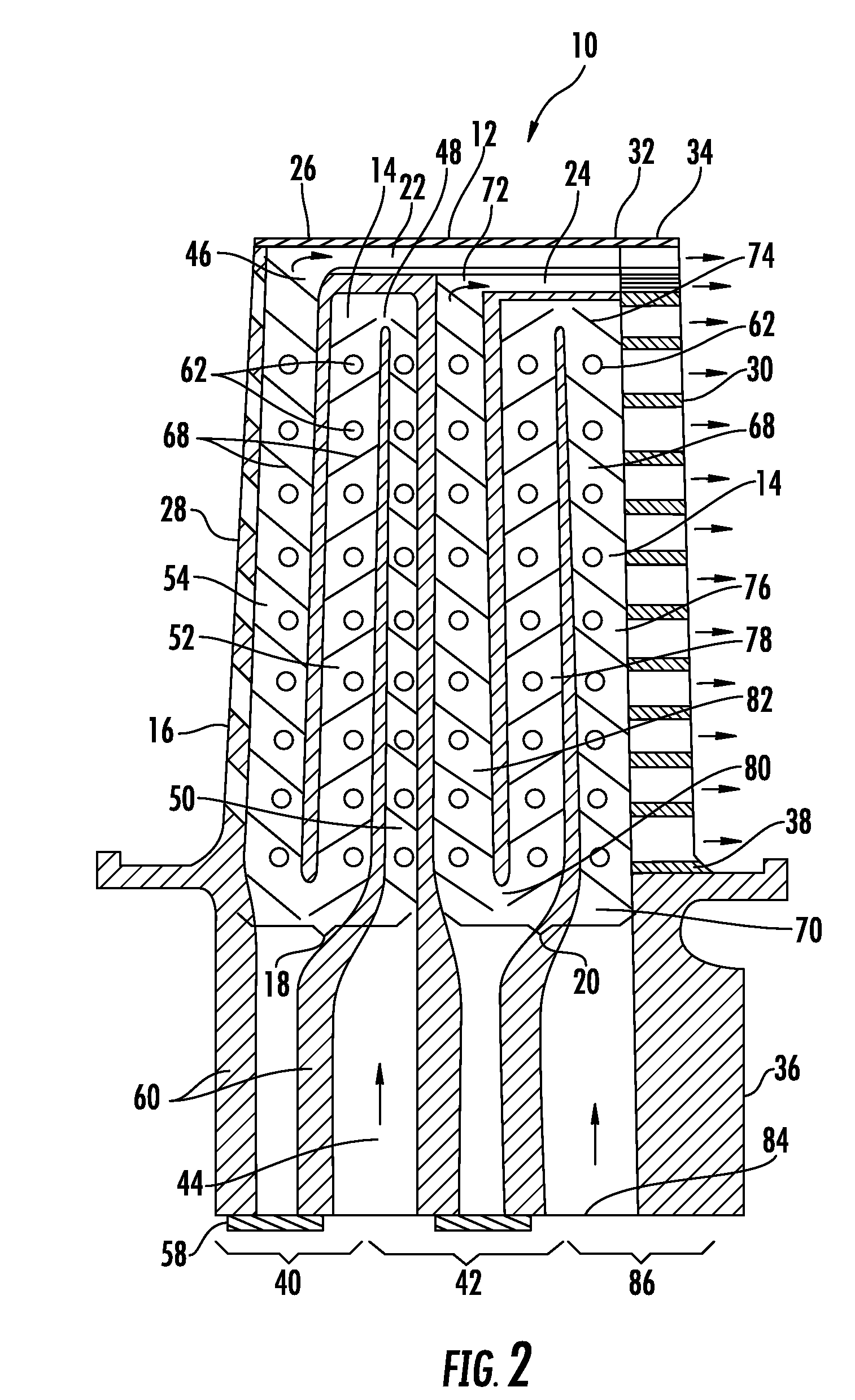Turbine blade dual channel cooling system
a cooling system and turbine blade technology, applied in the field of turbine blades, can solve the problems of reducing the useful affecting the service life of the turbine blade, so as to prevent temperature overage and blade damage
- Summary
- Abstract
- Description
- Claims
- Application Information
AI Technical Summary
Benefits of technology
Problems solved by technology
Method used
Image
Examples
Embodiment Construction
[0022]As shown in FIGS. 1-6, this invention is directed to a turbine blade cooling system 10 for turbine blades 12 used in turbine engines. In particular, the turbine blade cooling system 10 includes a cavity 14, as shown in FIGS. 2 and 3, positioned between two or more walls forming a housing 16 of the turbine blade 12. The cooling system 10 may be formed from first and second cooling channels 18, 20 positioned in internal aspects of the blade 12 and in communication with first and second tip cooling channels 22, 24, respectively. The first and second tip cooling channels 22, 24 provide cooling to the tip aspects of the turbine blade 12 to prevent temperature overages and blade damage.
[0023]As shown in FIG. 1, the turbine blade 12 may be formed from a generally elongated blade 26 having the leading edge 28, the trailing edge 30, a tip 32 at a first end 34, a root 36 coupled to the blade 26 at an end 38 generally opposite the first end 34 for supporting the blade 26 and for coupling...
PUM
 Login to View More
Login to View More Abstract
Description
Claims
Application Information
 Login to View More
Login to View More - R&D
- Intellectual Property
- Life Sciences
- Materials
- Tech Scout
- Unparalleled Data Quality
- Higher Quality Content
- 60% Fewer Hallucinations
Browse by: Latest US Patents, China's latest patents, Technical Efficacy Thesaurus, Application Domain, Technology Topic, Popular Technical Reports.
© 2025 PatSnap. All rights reserved.Legal|Privacy policy|Modern Slavery Act Transparency Statement|Sitemap|About US| Contact US: help@patsnap.com



